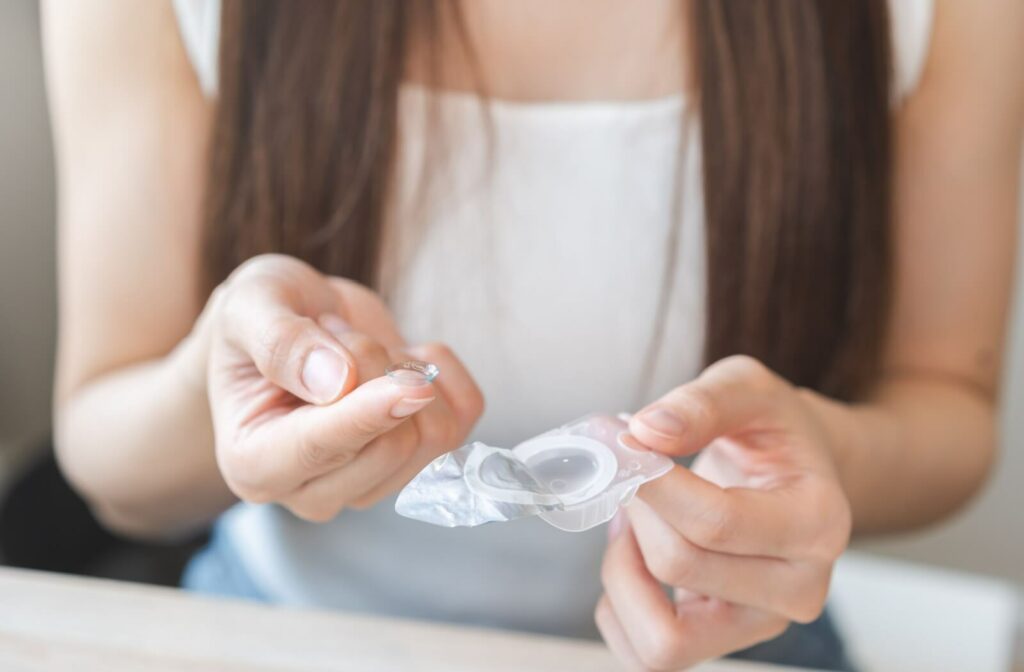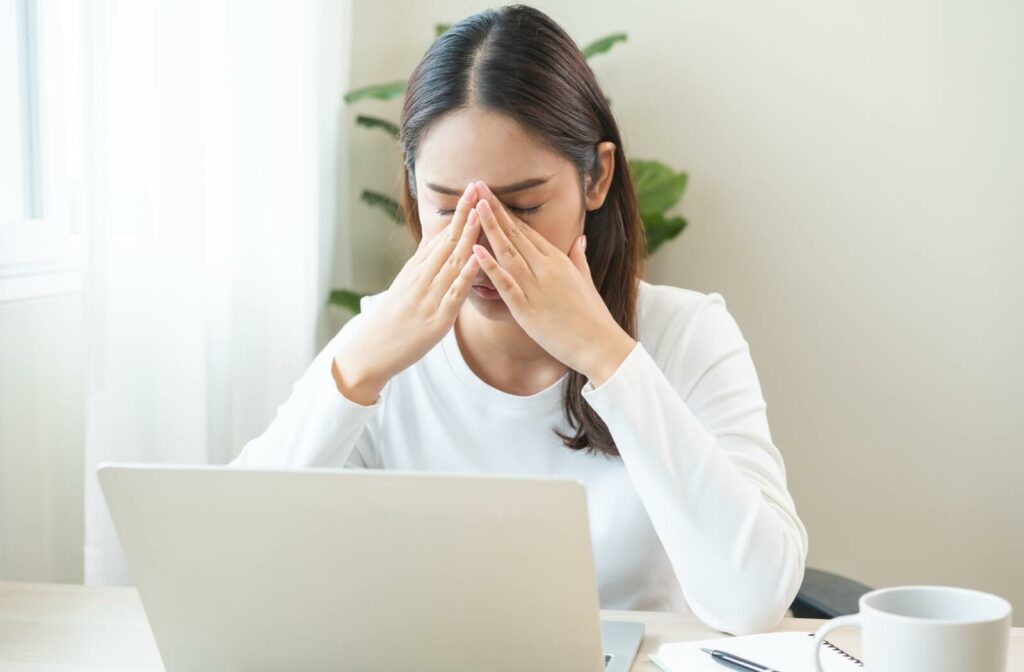Imagine the end of a long day, and you finally remove your contact lenses, only to feel that familiar, irritating dryness in your eyes. It’s not just you, this is an experience shared by many who rely on contacts for clear vision. While contact lenses can offer incredible convenience and clarity, they can also be the culprit behind dry eye disease.
Your optometrist can help you understand how your contacts might affect your ocular health and offer solutions so you can end your day with comfortable vision.
What Is Dry Eye Disease?
Dry eye disease occurs when your eyes don’t produce enough tears or the right quality of tears to keep them comfortable and healthy. Symptoms include:
- Redness
- Irritation
- A gritty sensation
- Blurry vision
- Excessive tearing
While for many sufferers, dry eyes can come and go, the persistent discomfort can make tasks like reading, driving, or working on a computer challenging. Many dry eye sufferers often find their condition worsens over time, leading to prolonged discomfort and even potential damage to the eye’s surface.
Risk Factors for Dry Eye Disease
Dry eyes can happen to anyone, and contact lenses aren’t the one reason you may notice symptoms. Several factors can increase your likelihood of developing it, such as:
- Age: As we get older, our tear production drops, so older folks are more likely to experience dry eyes.
- Hormonal changes: Women, especially during pregnancy, menopause, or if they’re on birth control, might notice fewer tears being produced.
- Environmental conditions: Being in dry, windy, or hot places can cause your tears to evaporate.
- Excessive screen time: We tend to blink less while using a digital screen, giving our eyes less time to refresh.
- Medical Conditions: Conditions like diabetes, thyroid problems, and autoimmune issues can affect the moisture level in our body.
If you think you’re at risk, it’s important to keep an eye on your eye health and get some expert advice when needed.
The Connection Between Contacts & Dry Eye
Contact lenses sit on your eye’s tear film, which plays a key role in keeping your eyes healthy. The tear film has 3 layers that need to work together. They are:
- Lipid Layer: The outer layer, made of oils, reduces evaporation and moistens the eye’s surface. It’s produced by the meibomian glands in the eyelids.
- Aqueous Layer: The middle, thickest layer, mainly water, provides moisture, nutrients, and oxygen to the eye’s surface. It’s produced by the lacrimal glands above each eye.
- Mucin Layer: The innermost layer, made of mucins, helps the tear film stick to the eye and ensures even distribution of the aqueous layer for comfort and clear vision.
If your tear film isn’t up to par, wearing contacts might worsen dry eye symptoms. Here’s why:
- Less Oxygen Flow: Traditional contacts can reduce oxygen flow to the cornea, which is crucial for healthy eyes.
- Faster Tear Evaporation: Contacts can speed up tear evaporation, leading to dryness.
- Increased Friction: The lens itself can irritate your eye, causing inflammation that can add to dryness and discomfort.
But contact lens lovers aren’t out of luck. For some people, the material and fit of their lenses can make a difference, so it’s important to pick the right type of contact lenses.

Contacts Lenses for Dry Eye
Living with dry eye doesn’t mean giving up contacts altogether. Several alternatives can help manage symptoms while allowing you to enjoy the convenience of contact lenses:
Silicone Hydrogel Lenses
These lenses are made from a silicone-based material that allows more oxygen to pass through to the cornea than traditional hydrogel lenses. Increased oxygen permeability can help reduce dryness associated with contact lens wear, while their lower water content means they shouldn’t dry out as fast.
Daily Disposable Lenses
Daily disposables are single-use lenses you discard at the end of each day. They can be more comfortable for individuals with dry eye because they don’t accumulate deposits and allergens over time. Each day starts with a fresh, clean lens, reducing the risk of irritation and dryness.
Scleral Lenses
Scleral lenses are larger than standard contacts and vault over the entire cornea, resting on the sclera (the white part of the eye). They create a reservoir of tears between the lens and the cornea, providing continuous moisture and potential relief from dry eye symptoms.
Managing Dry Eye
Since some dry eye factors are environmental, making a few lifestyle tweaks can go a long way in easing dry eye symptoms and boosting overall eye comfort. Here are some practical tips to consider:
- Stay hydrated
- Take regular screen breaks
- Use a humidifier at home
- Wear sunglasses outside
- Avoid smoke and heat
- Turn A/C fans away from your face
- Get plenty of sleep
Incorporating these changes into your routine can greatly enhance your eye comfort and provide relief from dry eye symptoms, allowing you to enjoy life more fully.
Taking the Next Step to Eye Comfort
Dry eye disease often has a complex relationship with contact lens wear, but solutions are available. At Focus West Optometry, we’re here to help improve your quality of life with the right eye care solutions. From dry eye kits to iLux treatment for meibomian gland dysfunction, we can help you enjoy your contacts without irritation.
Book an appointment with us today, and let’s work together to take the first step toward relief.



